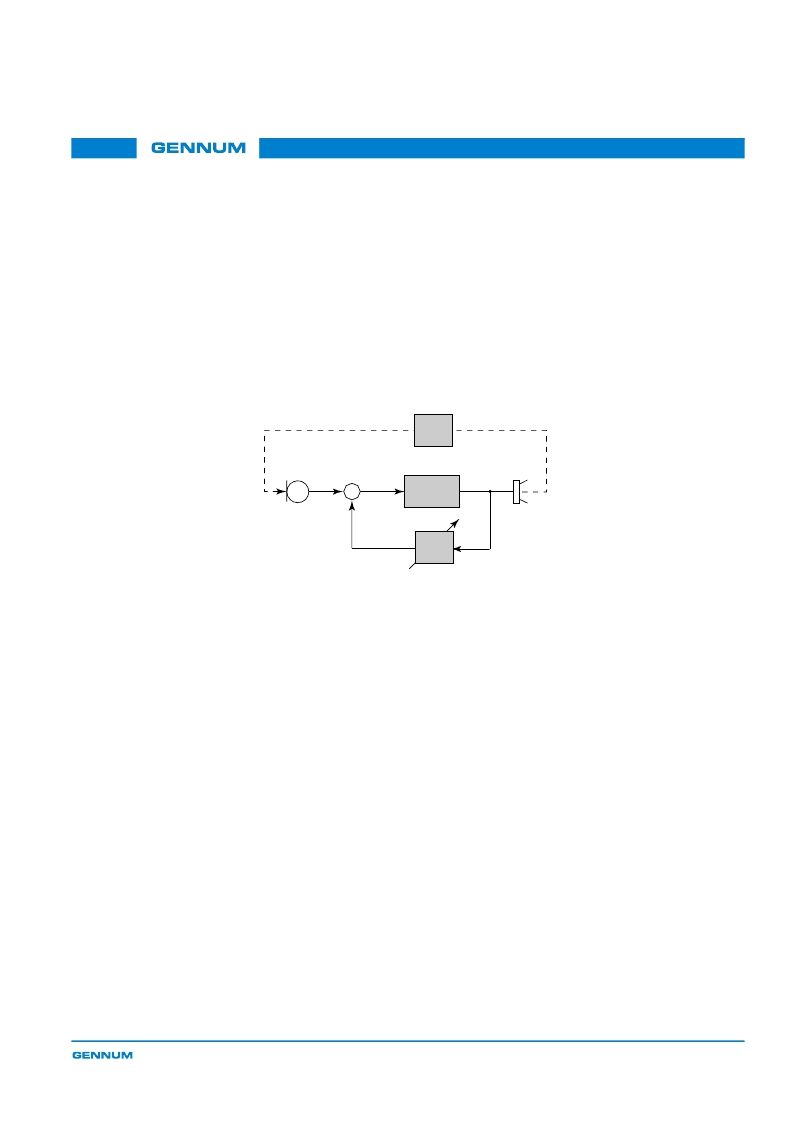- 您現在的位置:買賣IC網 > PDF目錄384301 > GA3219 (Gennum Corporation) Venture-TM Digital DSP System PDF資料下載

GA3219 / GA3218 / GA3217 Preliminary Data Sheet
Proprietary and Confidential
32718 - 2
February 2005
11 of 24
7. Functional Block Description
7.1 Adaptive Feeback Canceller
The Adaptive Feedback canceller (AFC) reduces acoustic feedback by forming an
estimate of the hearing aid feedback signal and then subtracting this estimate from
the hearing aid input. Therefore the forward path of the hearing is not affected.
Unlike adaptive notch filter approaches, Venture's AFC does not reduce the
hearing aid's gain. The AFC is based on a time-domain model of the feedback path.
Venture’s second generation AFC exhibits greatly improved resistance to tonal
inputs.
Figure 7-1: Adaptive Feedback Canceller (AFC) block diagram
7.2 Adaptive Noise Reduction
The noise reduction algorithm is built upon a high resolution 128-band filterbank
enabling precise removal of noise. The algorithm monitors the signal and noise
activities in these bands, and imposes a carefully calculated attenuation gain
independently in each of the 128 bands.
The noise reduction gain applied to a given band is determined by a combination
of three factors:
Signal-to-Noise Ratio (SNR)
Masking threshold
Dynamics of the SNR per band.
The SNR in each band determines the maximum amount of attenuation that will be
applied to the band; the poorer the SNR, the greater the amount of attenuation.
Simultaneously, in each band, the masking threshold variations resulting from the
energy in other adjacent bands is taken into account. Finally, the noise reduction
gain is also adjusted to take advantage of the natural masking of 'noisy' bands by
speech bands over time.
Based on this approach, only enough attenuation is applied to bring the energy in
each 'noisy' band to just below the masking threshold. This prevents excessive
amounts of attenuation from being applied and thereby reduces unwanted artifacts
G
Σ
H'
H
+
-
Feedback path
Estimated feedback
相關PDF資料 |
PDF描述 |
|---|---|
| GA3220 | Programmable Signal Processing Platform for Hearing Instruments |
| GA3222 | Advanta-TM ADRO-TM - Enabled DSP System |
| GA3224 | PARAGON-TM DIGITAL Two Channel DSP System |
| GA3225 | PARAGON⑩ DIGITAL Four Channel DSP System with FRONTWAVE |
| GA4F4M | KPT 61C 61#20 SKT PLUG |
相關代理商/技術參數 |
參數描述 |
|---|---|
| GA3220 | 制造商:GENNUM 制造商全稱:GENNUM 功能描述:Programmable Signal Processing Platform for Hearing Instruments |
| GA3222 | 制造商:GENNUM 制造商全稱:GENNUM 功能描述:Advanta-TM ADRO-TM - Enabled DSP System |
| GA3224 | 制造商:GENNUM 制造商全稱:GENNUM 功能描述:PARAGON-TM DIGITAL Two Channel DSP System |
| GA3225 | 制造商:GENNUM 制造商全稱:GENNUM 功能描述:PARAGON⑩ DIGITAL Four Channel DSP System with FRONTWAVE |
| GA3-250 | 制造商:Southco 功能描述: |
發(fā)布緊急采購,3分鐘左右您將得到回復。